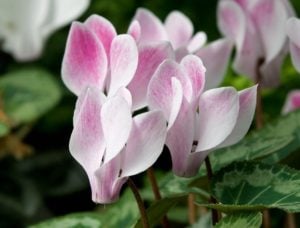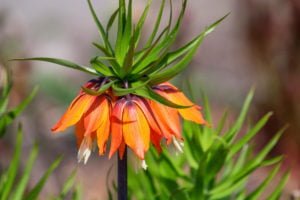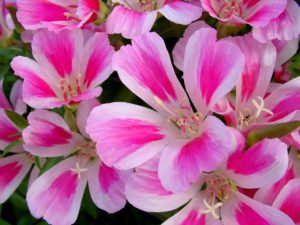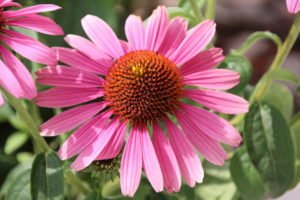Hellebore an amazing beauty plant that was popular in the Middle ages: it was believed that hellebore protects against witchcraft, the evil eye and evil spirits, which is why it was planted near the entrance to the house or yard. Today, of course, it is valued for other qualities. It is about them, as well as the secrets of growing hellebore, that I will tell you in this article.
Legend
Did you know that hellebore is also called “Christmas Rose” and “Christ flower”? The legend about him says that after learning about the birth of the Savior, the Bethlehem shepherds decided to bring gifts to Him. All the shepherds gathered everything they could, and only one shepherd could not find a worthy gift. He wept with great sorrow, and in the place where his tears fell, a beautiful flower grew, which became a gift to the infant Christ — a Christmas rose.

Place of Origin
Having lost its popularity a little, hellebore again became a favorite of gardeners only some 10-15 years ago, when it was talked about as a wonderful healer, able to cure various diseases.
Quite often there are thickets of hellebore and in nature – on the edges of mountain deciduous forests in Central Europe, the Mediterranean and Western Asia.

Hellebore belongs to the family Ranunculaceae and, like all Ranunculaceae, also poisonous! Evergreen hellebore is not only hardy, but also drought-resistant, and its flowering in the middle lane begins in March, when flower beds are not yet decorated with bright colors. Flowers of Helleborus very beautiful, a bit like lanterns hanging, large enough in diameter up to 8 cm (3 inch).
Planting of hellebore
Before choosing a place for planting hellebore, note that the plant is painfully experiencing frequent transplants, but in one place can grow well for about 10 years!
Helleborus not very demanding to soil but grow best in partial shade of shrubs and trees — where drained loose soil is always wet. I put the hellebore in a permanent place under the large spreading Apple trees, in the end in the summer they are in the shade, and in winter (when, in fact, blooms hellebore) it is provided with a sufficient amount of light. From this variant of planting there is another plus — the leaves of Apple trees become natural mulch, at times increasing the fertility of the soil, which supplies the root system with nutrients.
We plant already grown plants of hellebore or its parts in pre-prepared (half-filled with compost) pits measuring about 25x25x25 cm (10x10x10 inches), with a distance of about 30 cm (12 inch) from each other. During planting, carefully hold the hellebore in the landing pit with one hand, the other filling the ground all the free space around it, tamp the soil, water the landing site. For the next three weeks, water the plants abundantly.
Now a few words about what concerns the aesthetic side: planting hellebore better groups, so it looks the most advantageous against the garden.
You can plant a hellebore around the tree, and in the foreground — any spring Bulbous (tulips, crocuses, and so on), such joint planting also look very beautiful.
Reproduction of hellebore
Hellebore as propagated by sowing seed or by dividing the old bushes. General guidelines are as follows: seeds need to be sown on seedlings immediately after their collection (they do not remain viable), in loose moist humus earth, closing up to a depth of about 1.5 cm (0.6 inch). Shoots of Helleborus will appear in March next year, and bloom the seedlings only 3 years later.

Slightly grown seedlings that have already managed to get a couple of real leaves, transplanted into a semi-shaded place (I, for example, transplanted into a flower bed under a large spreading Apple tree, the crown of which is not much thickened). In a permanent place grown hellebore can be planted only after 2-3 years, it is desirable to transplant in September.
If you want to multiply hellebore division of bushes (namely, so it multiplies very simply), in the spring, as soon as it fades, just divide its root into several parts and put in pre-prepared pits.

General recommendations for the reproduction of hellebore I have already given, now a little talk about the intricacies of reproduction of its different varieties:
- Helleborus niger is best propagated in spring by dividing the bushes;
- Helleborus foetidus is very easily propagated by self-seeding and, in contrast to Helleborus niger, is absolutely can not tolerate division of rhizomes;
- Helleborus orientalis is easiest to propagate by dividing rhizomes in early autumn.
Care for hellebore
Hellebore is very responsive to fertilizer, and will thank you for caring lush beautiful flowering. I feed the hellebore bone flour, bring it in small handfuls about every 3 months.

After flowering, the soil around the plant is mulched with compost, this helps to retain moisture in the soil and serves as an excellent fertilizer.
Pests and diseases of hellebore
The most dangerous pests of hellebore are snails, slugs, mice and the ubiquitous aphids. Occasionally may be affected Ghost moth, caterpillars that completely eats the roots of plants. I fight this scourge with insecticides.
Sometimes on the leaves of the hellebore appear dark spots, constantly increasing in diameter, it is a sign of damage to the plant fungal infection Coniothyrium hellebori. Most actively this disease spreads in wet and warm weather, so the hellebore will have to watch and after it has fading. To combat the infection, you need to cut off all the affected leaves, and the plants themselves are treated with a fungicide, this will help stop the disease.

Remember that diseases are primarily affected by weak plants! Therefore, try to comply with agricultural machinery and constantly improve conditions: feed them, water in time and so on. Only with proper care hellebore will reward you with abundant blooms!
Types and varieties of hellebore
Helleborus niger can be found in the wild, it blooms from late December to February snow-white and sometimes pale pink flowers do not droop, reaching a diameter of 8 cm (3 inch).

In total, there are several varieties of Helleborus niger in nature, the most interesting of which are:
- grade “Potter’s Wheel” with white, the largest flowers in the genus, reaching a diameter of 12 cm (5 inch);
- the cultivar “Praecox”, pale pink flowers which bloom in late November, when the bed becomes dull and empty.
Very effective and Helleborus orientalis, flowering which, in comparison with other species, begins quite late — in mid — March-April.

Helleborus orientalis blooms white, pale pink, cream and even purple flowers, sometimes with a nettle inside.
Helleborus foetidus, as you may have guessed, exudes not very pleasant aroma, but from this its multiple flowers of unusual pale green color do not lose their appeal. Decorative Helleborus foetidus, by the way, not only for its unusual flowers.

This compact plant, reaching a height of only 0.5 m (1.6 ft), it is just strewn with spectacular deeply dissected leathery leaves that look very exotic.






